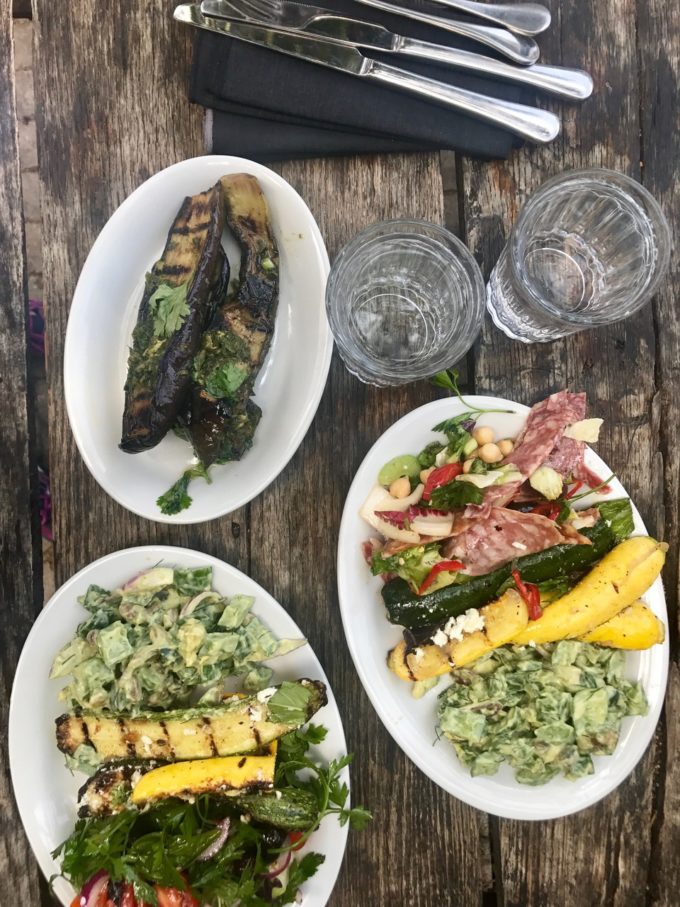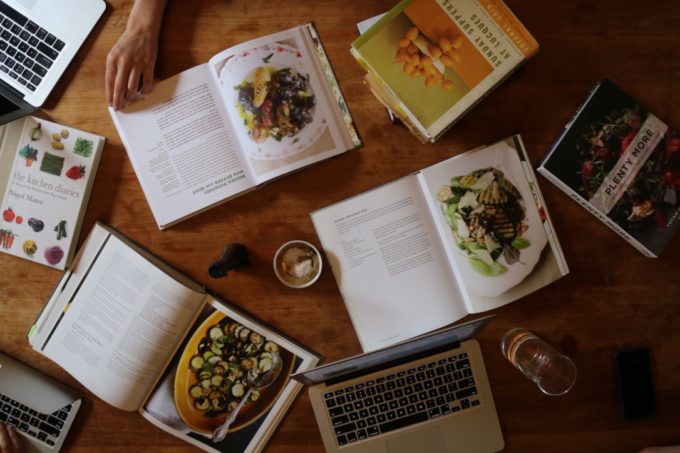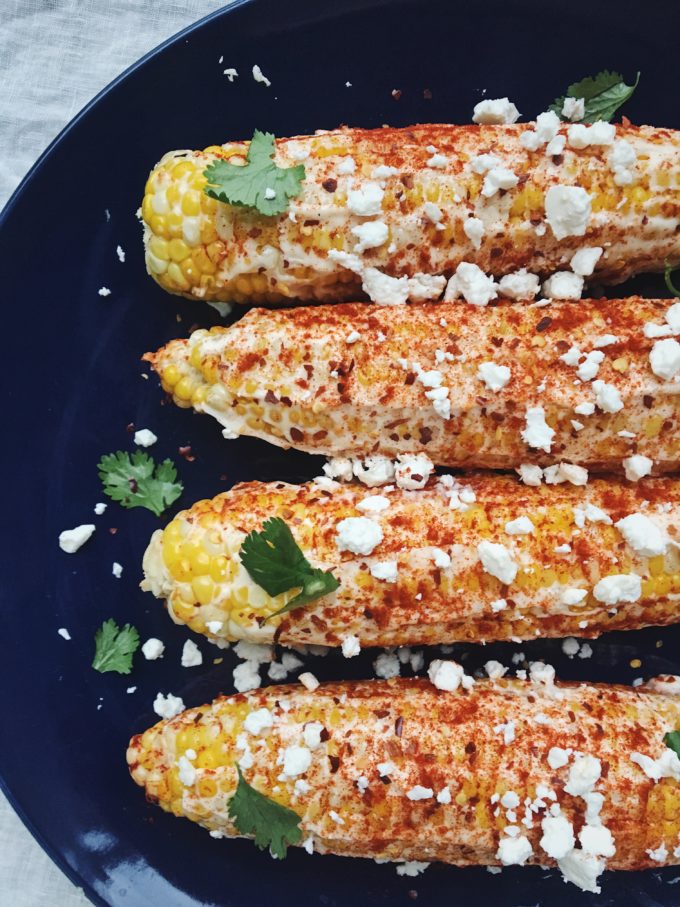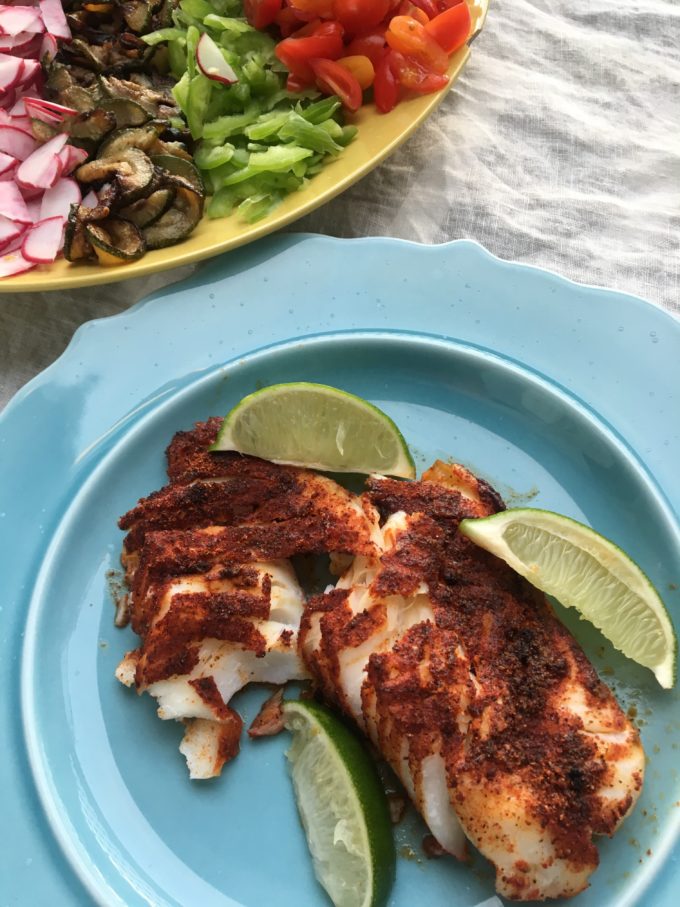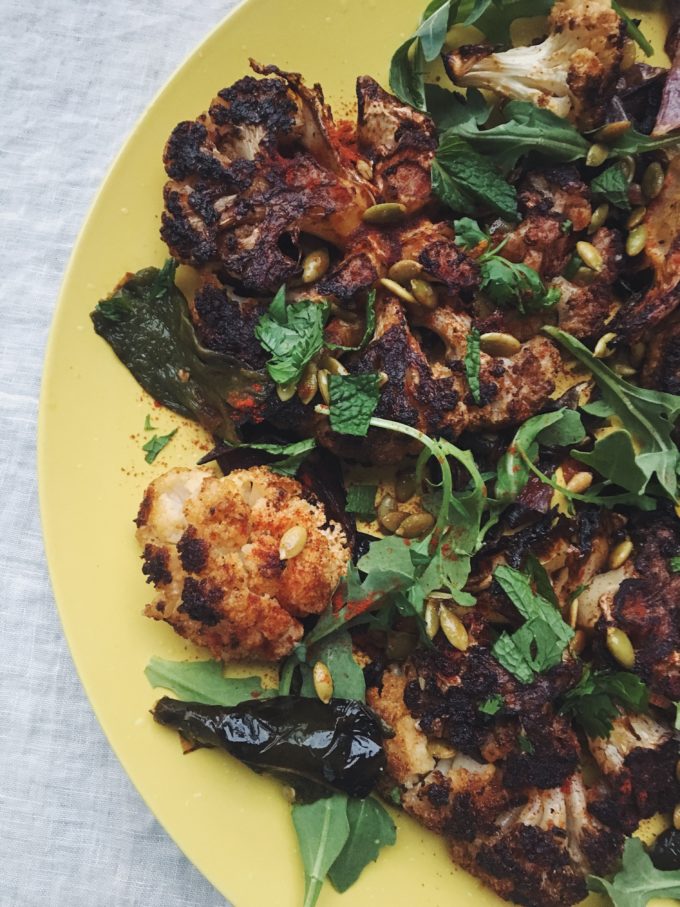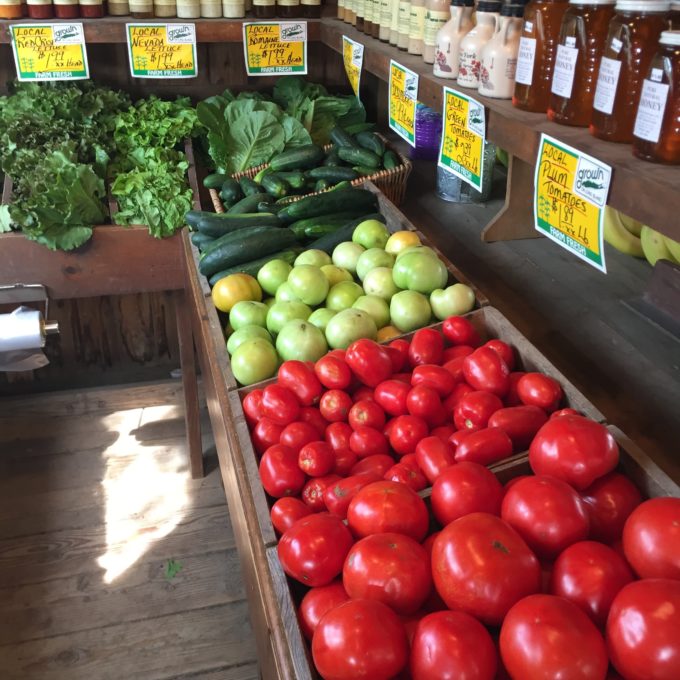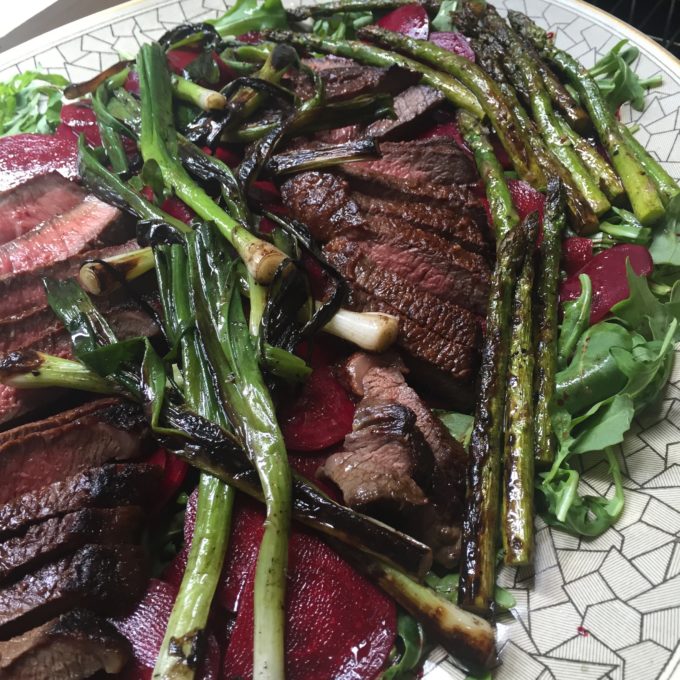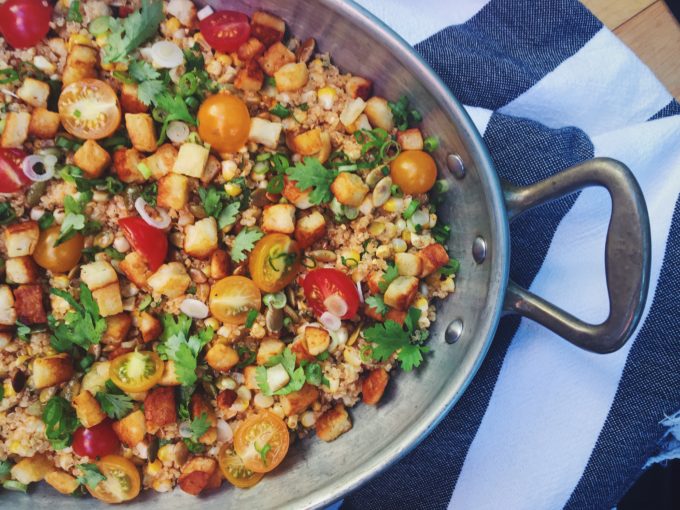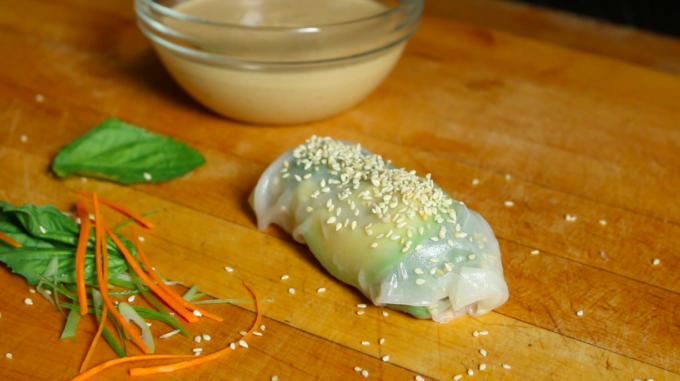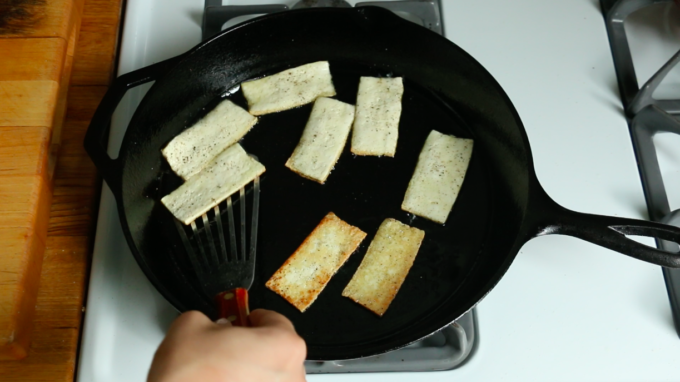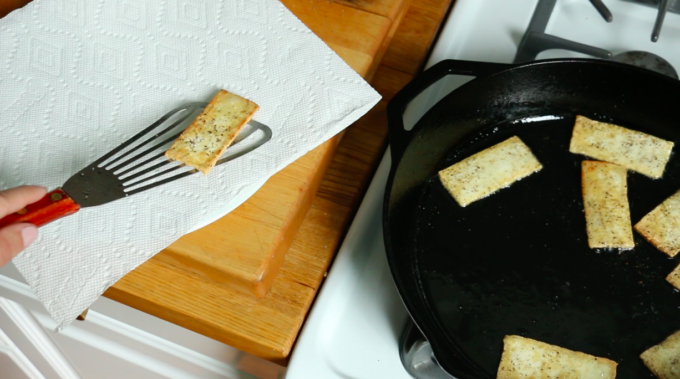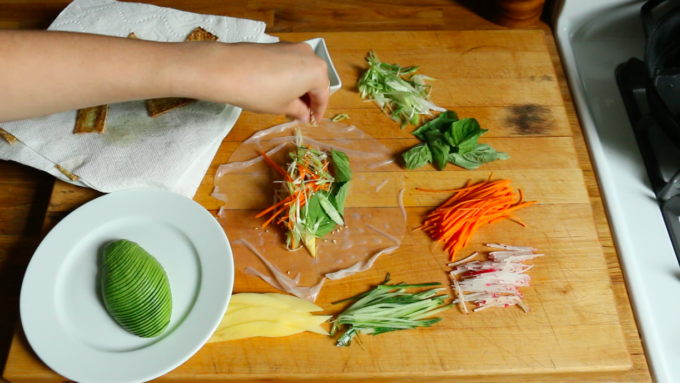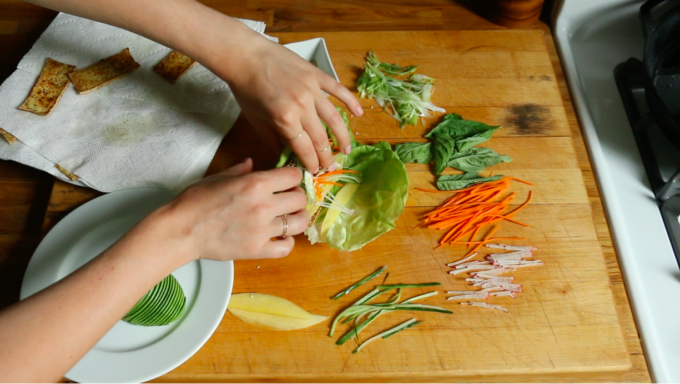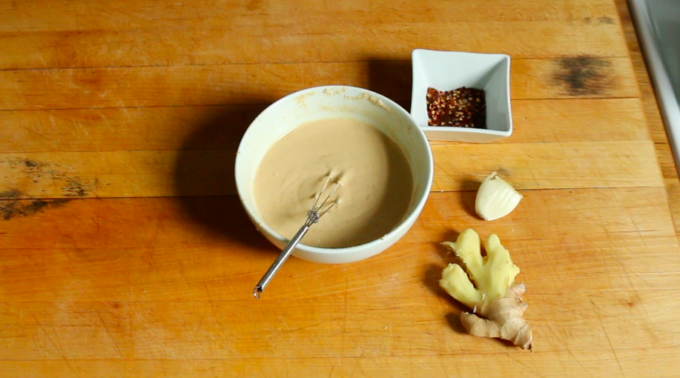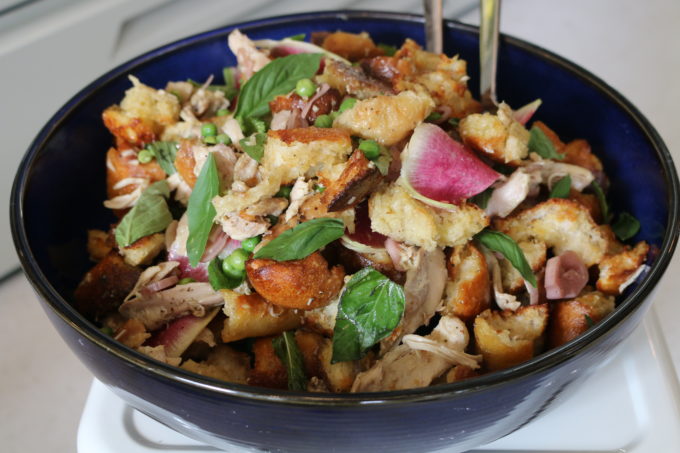
There are certain “gateway salads” we’ll prepare when feeding self-proclaimed veggie-haters. I stubbornly refuse to believe that anyone could honestly dislike vegetables. The real issue simply has to be that they haven’t had one of our vegetable dishes yet. Given enough time, we can flip just about anyone.

Our bag of tricks is large and includes:
- Using greens sparingly, instead making the “filler” vegetables the stars a la a chopped salad (cucumbers, cherry tomatoes, bell peppers, etc.);
- Incorporating cooked vegetables like sweet potato croutons or roasted mushrooms,
- Being generous with our fatty friends, toasted nuts/seeds, cheese and avocado;
- And adding in unexpected salad components like proteins (eggs, roasted chicken, legumes, etc.), cooked grains or bread.
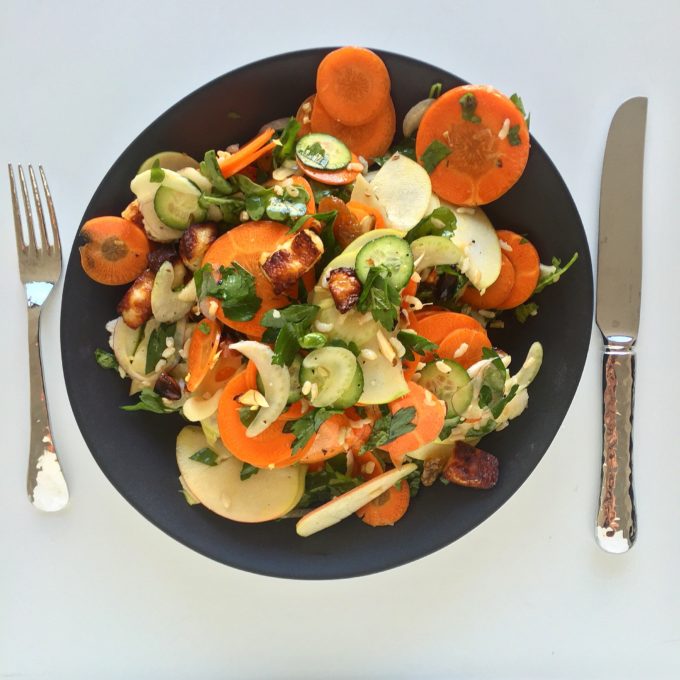
There is perhaps no better gateway salad that employs these tricks than panzanella. Traditionally, panzanella is made with day-old bread tossed with and rehydrated by perfectly ripe summer tomatoes, vinegar and plenty of olive oil. We love this version but it’s only the tip of the bread salad iceberg.
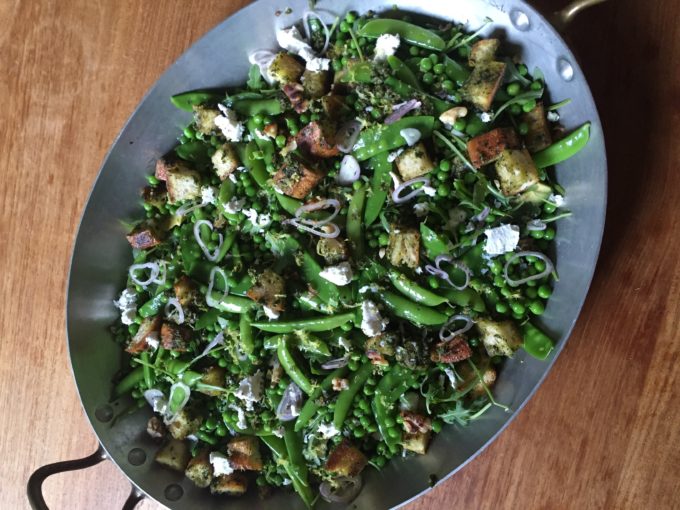
While the bread-tomato mix is perfection, almost all other seasonal vegetables cozy up well to torn bread. In the spring, one of our favorite versions includes blanched market peas, haricots verts and sugar snaps. In the fall and winter, you can’t beat a bread salad that’s equal parts roasted mushrooms or delicata squash. And this time of year, roasted or grilled bell peppers, zucchini, eggplant and/or onions are all good alternatives.
And yes, stale bread sops of vinaigrettes and vegetable juices like a sponge, but do you know what else it sops up? The drippings leftover from perfectly roasted chicken!
Our best-selling salad at Copper Beech is our roasted chicken panzanella. While resting our just-roasted chicken on a cutting board, we toss torn day-old bread with the juices left at the bottom of the sheet-pan plus a little olive oil if necessary, salt and freshly cracked pepper. That gets popped back into the oven until the bread is crisp and brown on the outside but still a little chewy and wet in the center. The warm croutons are then tossed with pulled chicken, plenty of herbs like fresh basil, parsley or mint, and then whatever combination of market vegetables we have on hand. No matter how much we make, it sells out.
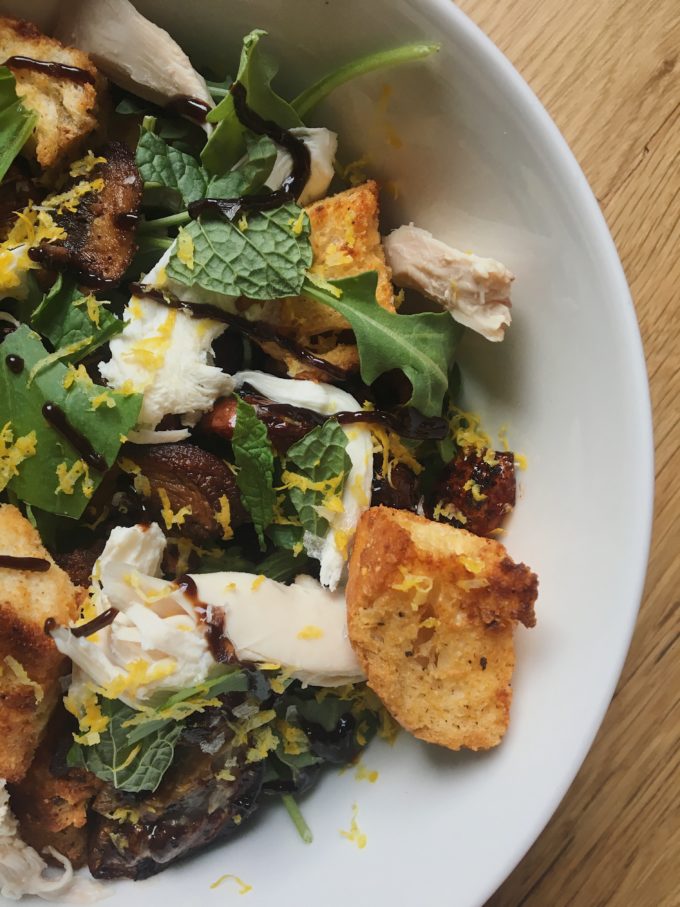
Consider making this salad for the next veggie-averse person in your life. Is it still considered a salad if its half chicken-dripping-logged bread and roasted chicken? Our answer is a confident and stubborn, “Yes!” It’s a gateway to the wonderful world of veggies after all.
With love always, Laura
Roasted Chicken Panzanella
Ingredients
1 4-5 lb organic chicken
olive oil
kosher salt and fresh cracked pepper
4-6 cups pieces torn bite-size bread (French bread, ciabatta or peasant bread all work well)
2 garlic cloves
6 cups vegetables of choice (halved cherry tomatoes and/or chopped cucumber and/or cooked vegetables like roasted mushrooms or grilled zucchini, etc. — the skies the limit!)
1 cup torn fresh herbs (basil, mint, and/or parsley are all delicious)
Zest of 1 lemon
A few handfuls greens (optional)
A generous shower of cheese like torn fresh mozzarella, crumbled goat cheese or shaved parm (optional)
Vinaigrette (whisk together the juice of 1 lemon, a spoonful of dijon mustard, 1/3-1/2 cup olive oil depending on your taste, salt and pepper to taste)
Method
Roast the chicken: Preheat oven to 425 degrees and remove chicken from fridge to come to room temp for 45 minutes. Place chicken on a sheet tray, breast-side up, dry thoroughly and season generously all over with a five-finger pinch of kosher salt (about 1 tbsp) and a few grinds of freshly cracked pepper. Drizzle generously with olive oil and roast for about 50 minutes until chicken is golden and a thermometer pricked into the breast reads 160 degrees. Remove from oven and transfer chicken to a cutting board being sure to drain any juices in the cavity back onto the sheet pan. (Feel free to gussy up the raw bird more if you’d like with compound butter, fresh herbs like rosemary or thyme, etc. but this will yield a simple but delicious roasted chicken.)
Prepare the croutons: After moving the chicken to a cutting board, toss the torn bread and garlic in with the chicken drippings. Make sure every bit of bread has been swiped through the liquid gold. Add a glug of olive oil if it seems at all dry. Season lightly with a pinch or two of kosher salt and freshly cracked black pepper and return the sheet pan to the oven. Toast for about 10 minutes, tossing halfway through, until bread is golden brown, crisp in some places and still a little soft and wet in others. Remove from oven to cool.
Finish the salad: First, pull chicken in large pieces off the cooled bird. Save any juices that have accumulated under the cooled chicken. Next, toss the pulled chicken, just-warm croutons and remaining ingredients in a large shallow bowl. Add in the reserved chicken juices if there are any. Next, add in vinaigrette to taste. Toss well so all ingredients are coated. Taste and adjust again with salt and pepper if necessary.
ENJOY!
